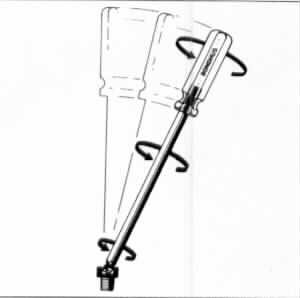Wrapping up the reassembly. Part 1.
I didn't get pics of my 'under the car' work, bolted up the tranny, crossmember stuff, h-pipe, driveshaft, exhaust, wire connections to tranny, o2 sensors, and starter, and finally the clutch cable. It took me 3 friggin times till I figured out the order in which the trans crossmember and exhaust pipes went... I think I spent 3 hours total under the car and called it a night when I finished. Sucked.
Lower intake installed. I dry fitted the intake and checked all bolt holes to make sure they aligned properly. I noticed the gap was pretty large between the intake and engine/heads. I used "the right stuff" sealant between the two. When I put a thick bead down and dropped the lower back down the bead didn't touch the intake so I ended up pulling it off again a stacking another bead on top of the first. It touched this time but just barely. But when I torqued the intake down it sucked it way down so the first bead might have been enough. What I do know is that it didn't squeeze out much excess so I think I did just fine.
I've used the rubber rail gaskets before with a bead in the corners(where rails meet heads) and I've used the cork rail gaskets with beads in the corners. Rubber did the best but I didn't have luck with cork. Small leak each time under the front left side and puddled in the upper timing cover.
Rear plug installed(drivers side lower intake) and front water temp sensor installed. The new plug and sensor already had thread sealant on the threads.

Rear passenger side egr spacer water line nipple installed. Bolts torqued to 18 then 24 ft lbs in the correct sequence. I ended up going over the bolts like 3 times on the 24 ft lbs as the gaskets compressed.

Hard heater lines installed. Sealed with permatex #2 sealant. I found that a crows foot works pretty good when tightening the nut for the rear bracket. Still sporting factory temp sensor in the hard line. 2 Heater core hoses connected.
Notice the intake ports, inner walls are rough, I actually hit them with my die grinder and burr and removed rough casting. I didn't sand and polish them up yet. I plan on doing this when I do my next upgrade (42 lb injectors, MAF sensor, and a tune). It will be a full head and intake port match n polish.

Fuel injectors installed with new o-rings and a very thin film of grease for ease of installation and seal.

Fuel rails installed. Still stock FPR on rail.

Wiring harness connected. Rear water lines connected to heater core and got EGR spacer water line connected. Thermostat housing installed(perm #2 on both sides paper gasket). Bought a racing style 192° thermo not long ago. Reused it. I've always used a 180° but never got very warm in winter time. I've also read somewhere that I might get better heat transfer using the original engineers design for this motor. I dunno.


Fuel lines installed to fuel rail. Water pump installed. I throw on some rubber gloves and using my index finger and thumb coat both sides of paper gasket with real light film of perm #2. Never had issues. Long time ago i bpught a new set of water pump bolts from LMR.
Mustang Water Pump Studs & Bolts (79-93) 5.0 5.8
Super happy I did. I've been keeping the bolts coated with antiseize except for the bolts that break the water jackets. They get perm #2. I put antiseize on all bolts I can, that stuff just plain makes all the difference when you have to take things apart.
You can see in this pic my wire harness ground wire. I ended up soldering a new connector on it after it was damaged some time back. Heat shrinked over the solder.

Water pump hoses connected. Bypass hose had a rip in the under side of 90° bend during inspection. Almost didnt catch it. Missing that would have pizzed me off. Got a new one.
With new heads and valvetrain I needed the taller valve covers. Which meant upper intake clearance problems.
BBK intake spacer installed with new studs in the 4 corners.
Vacume lines prepped for upper intake.
Also it was a day later and I rechecked my torque on lower intake bolts. They needed a little more tightening after overnight settling.

Part 2 coming soon.


 . Flywheel didn't come with dowel pins so beware of this when you buy a new one. Once all the parts arrived installation was easy. I have the 50oz off balance(1989) and it was sent off to machine shop with engine to be apart of the balancing. Starter plate went first, then the flywheel. Thread-locker blue and torqued to 85ft-lbs.
. Flywheel didn't come with dowel pins so beware of this when you buy a new one. Once all the parts arrived installation was easy. I have the 50oz off balance(1989) and it was sent off to machine shop with engine to be apart of the balancing. Starter plate went first, then the flywheel. Thread-locker blue and torqued to 85ft-lbs.








